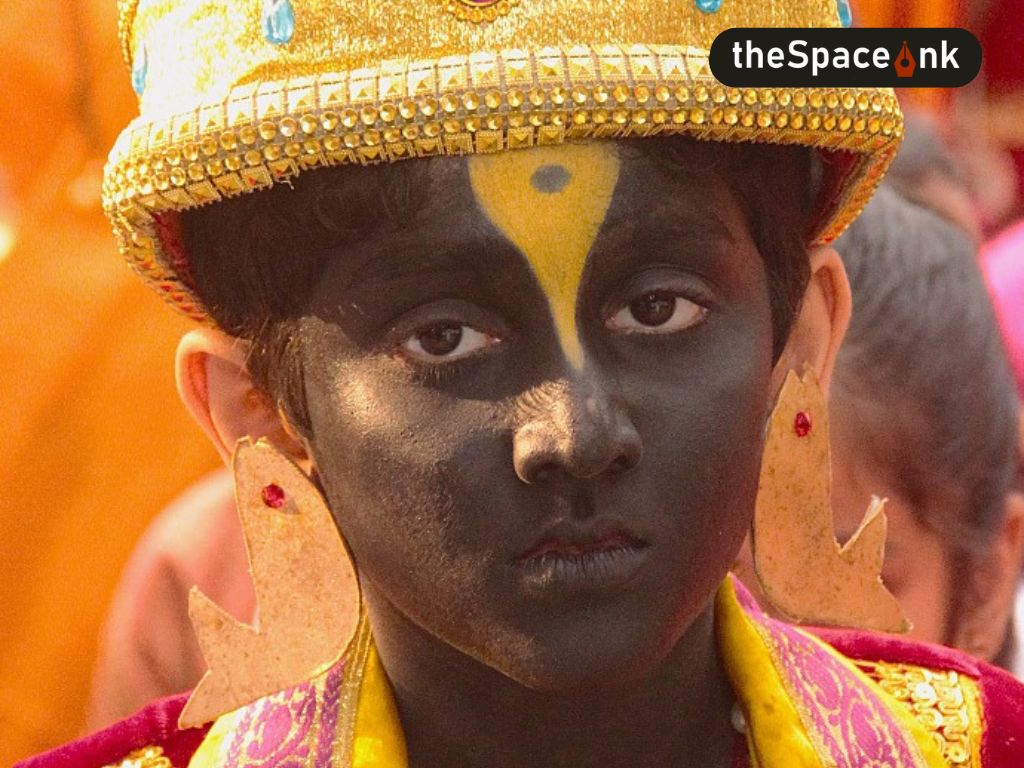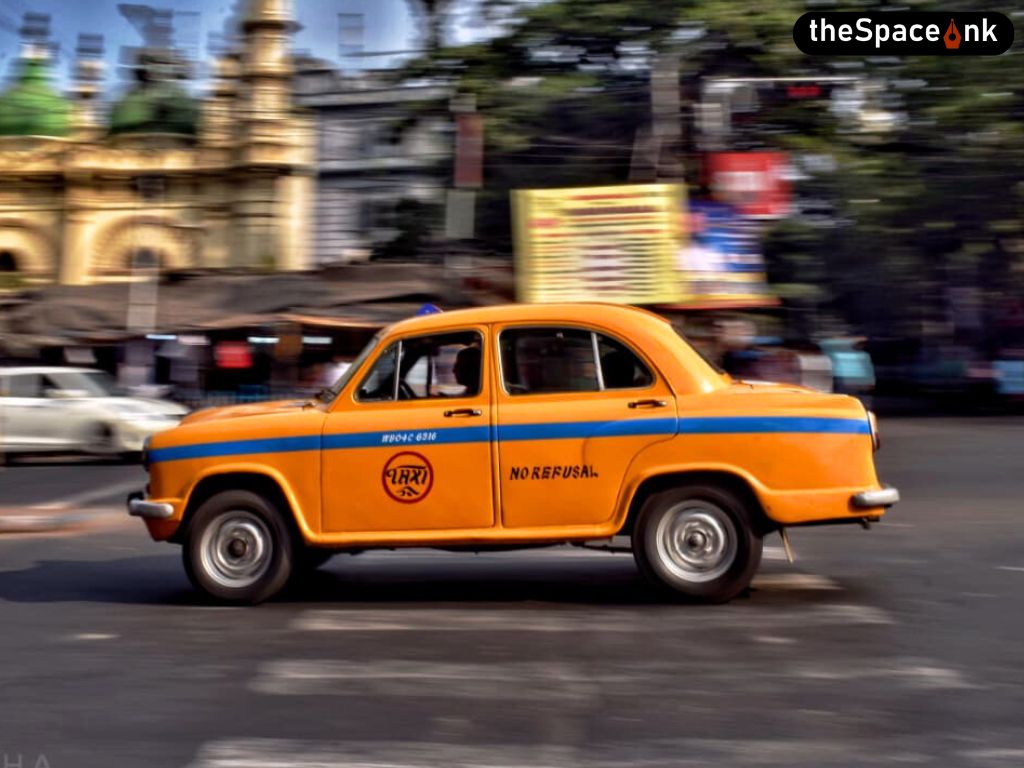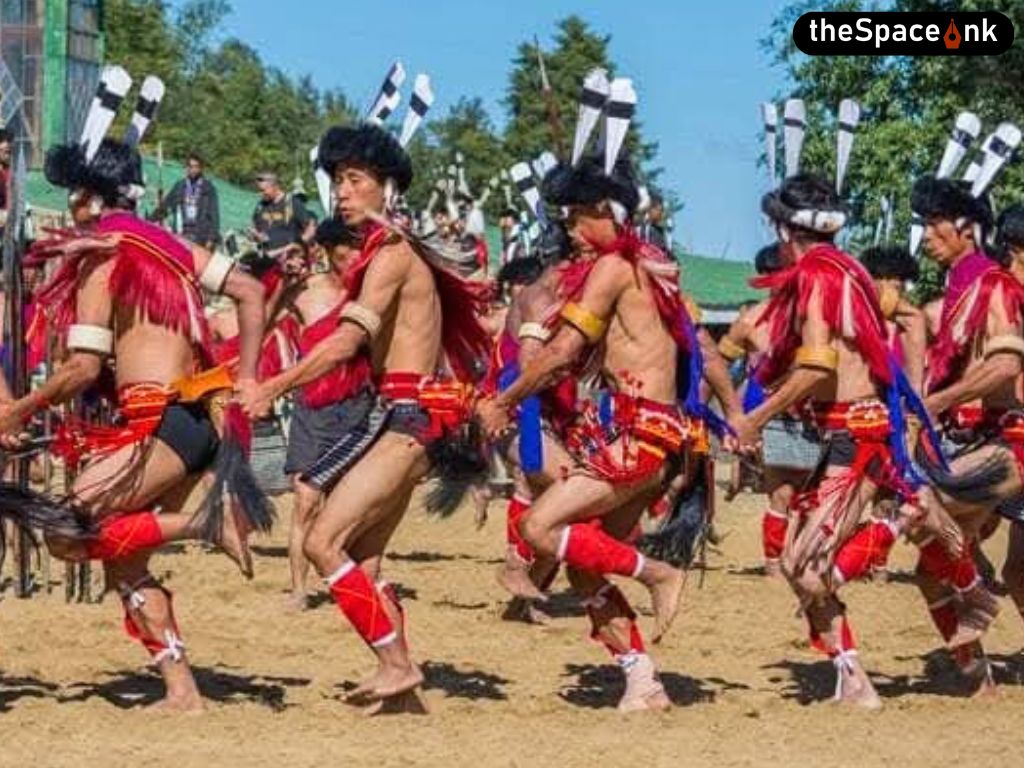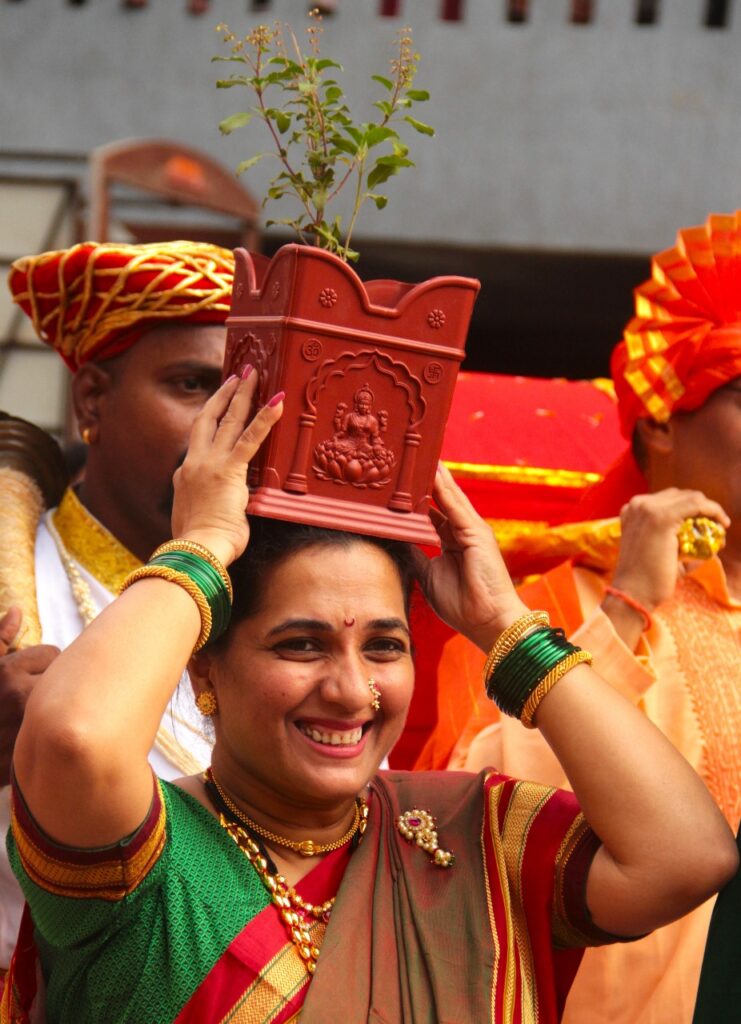
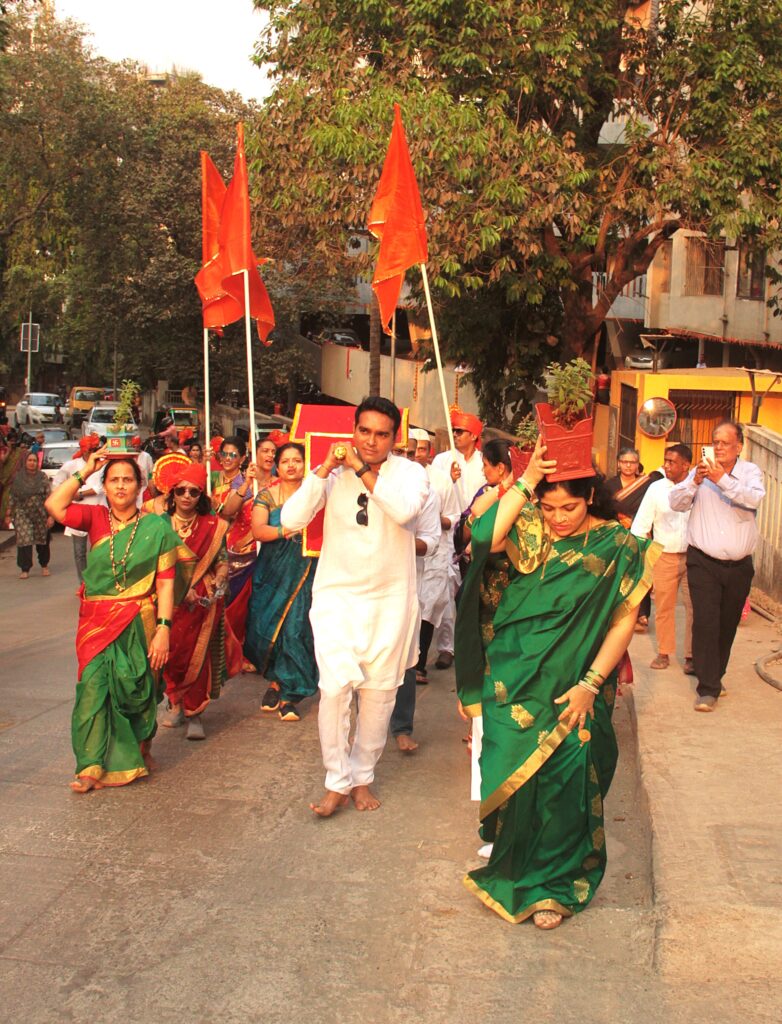
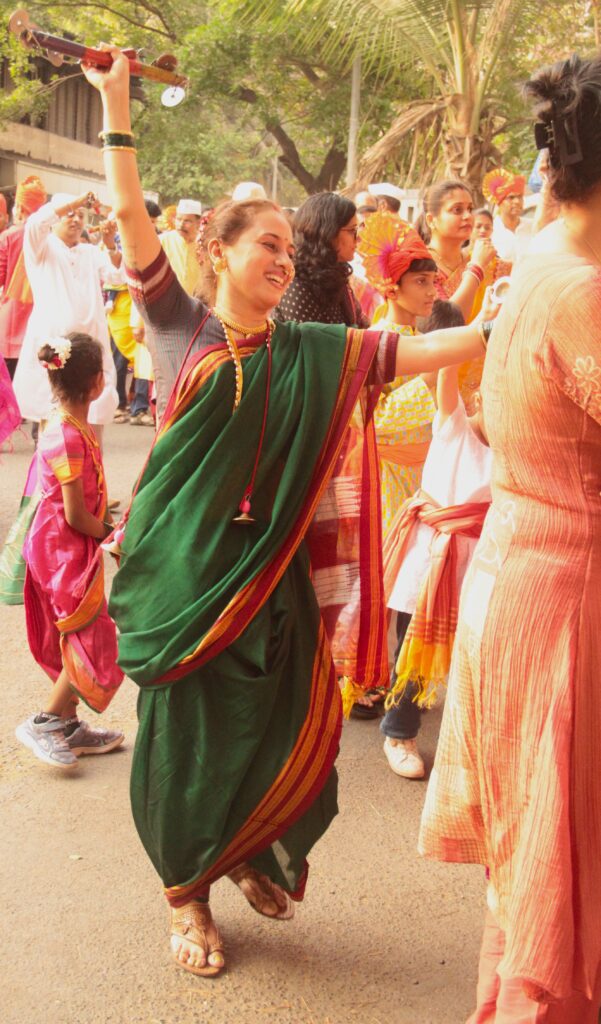
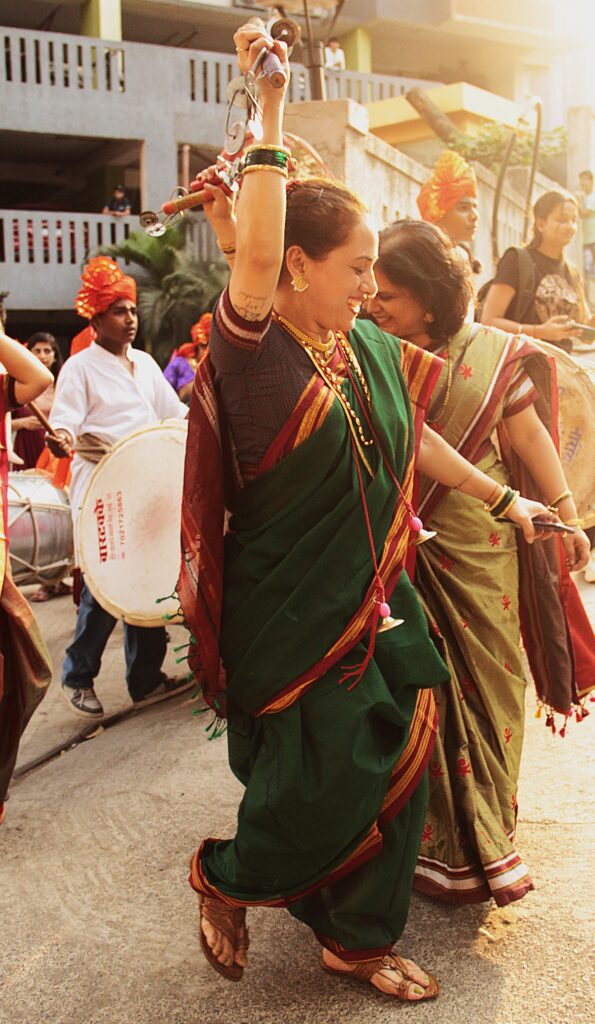
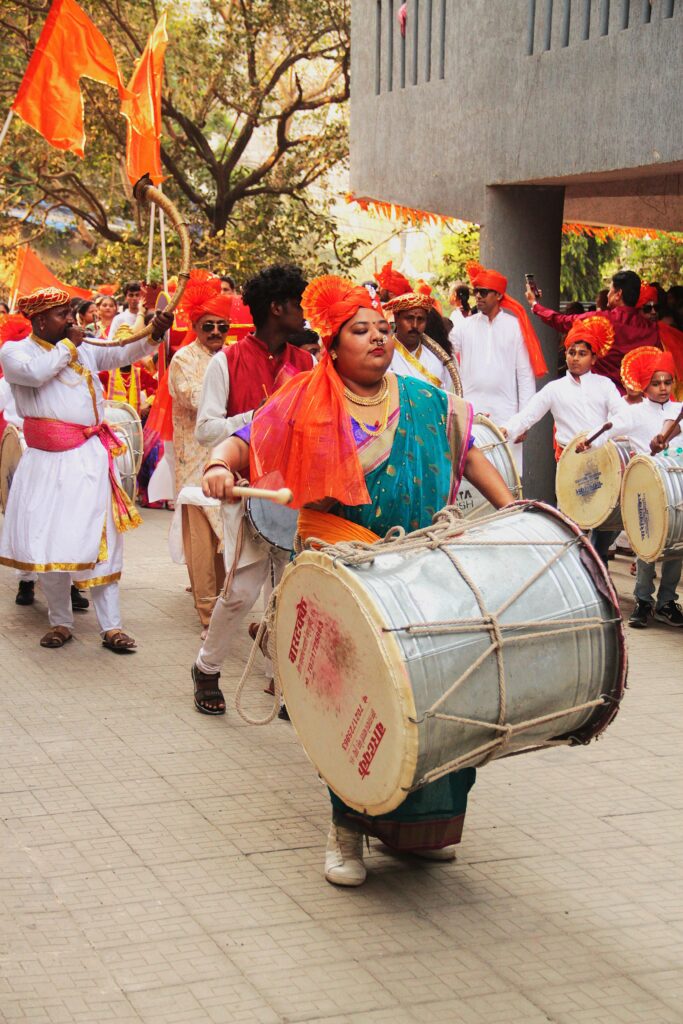
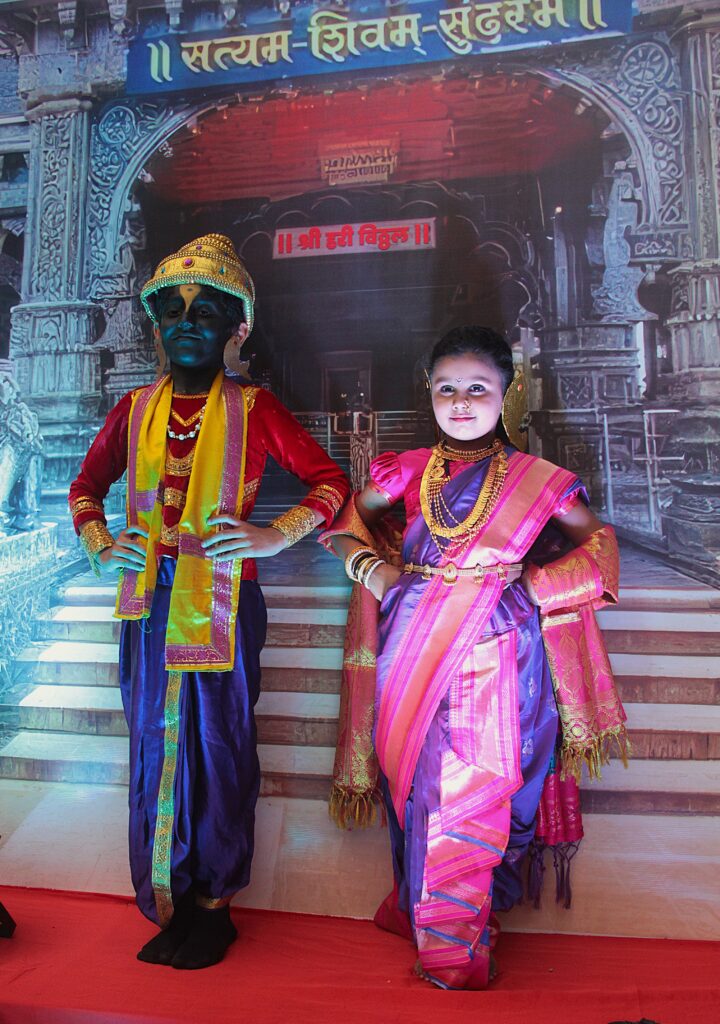
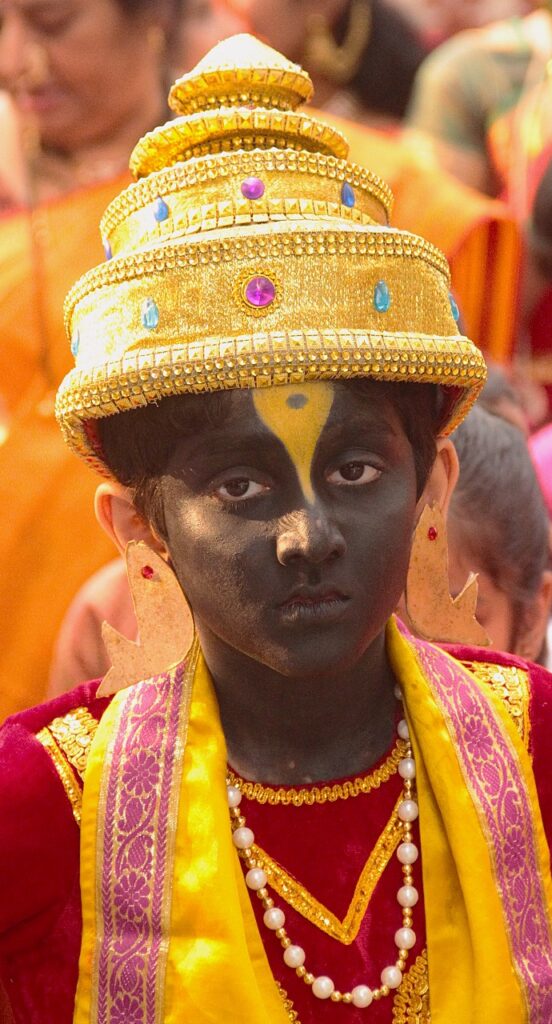
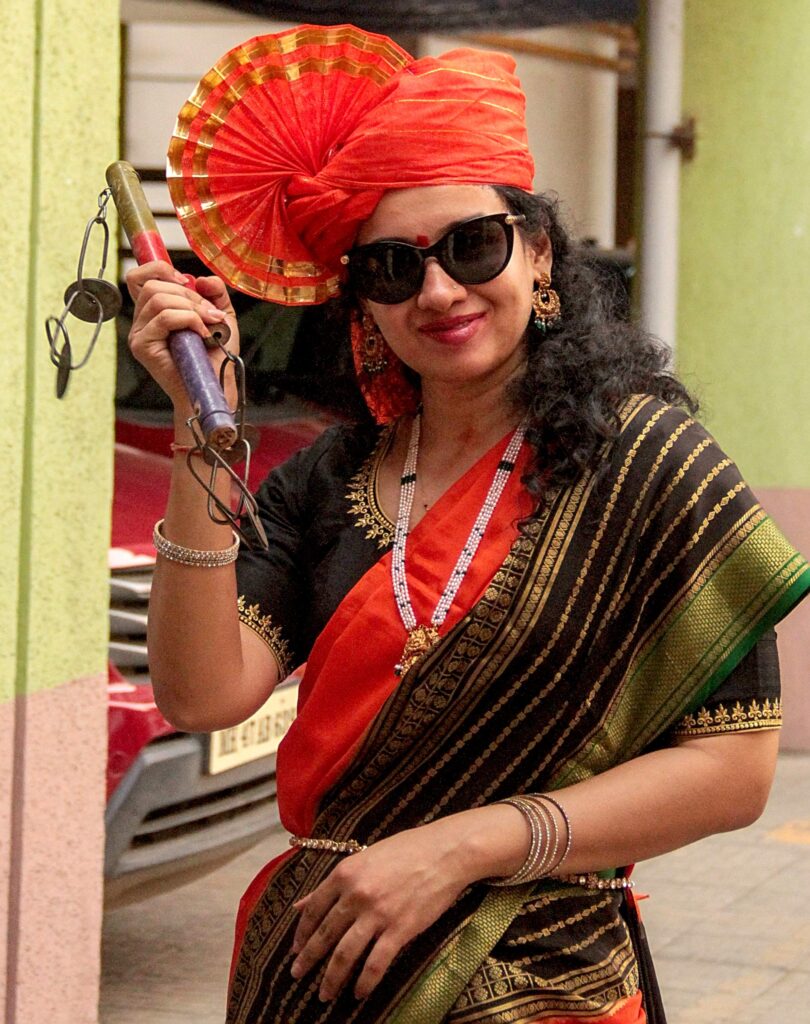
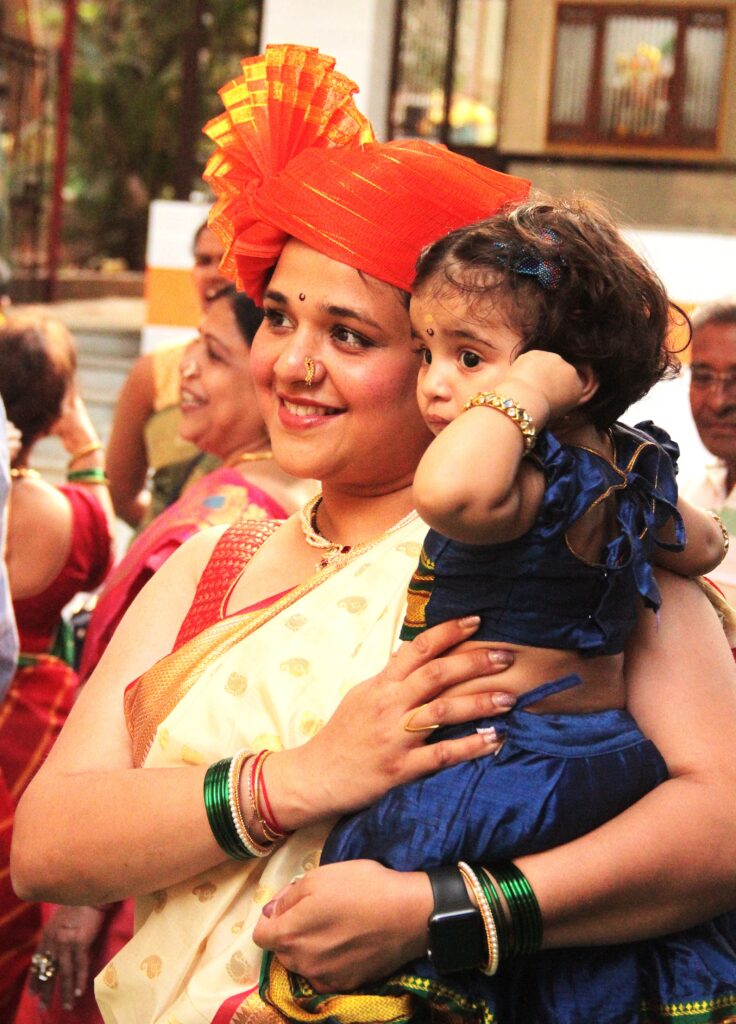
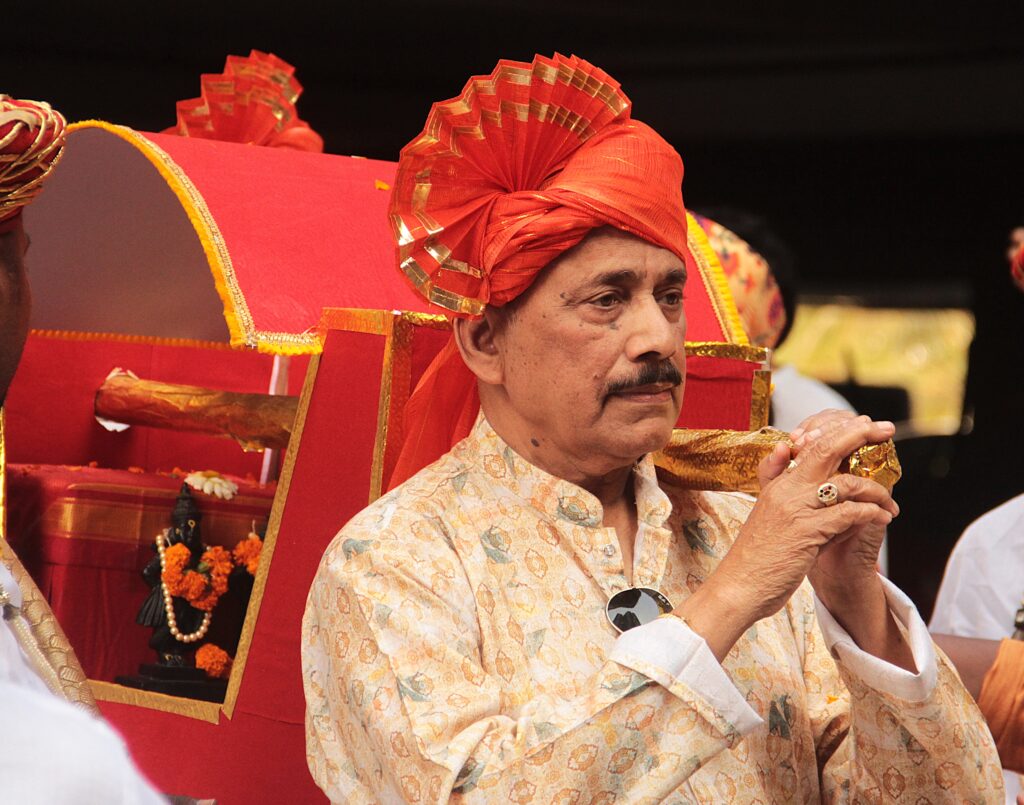
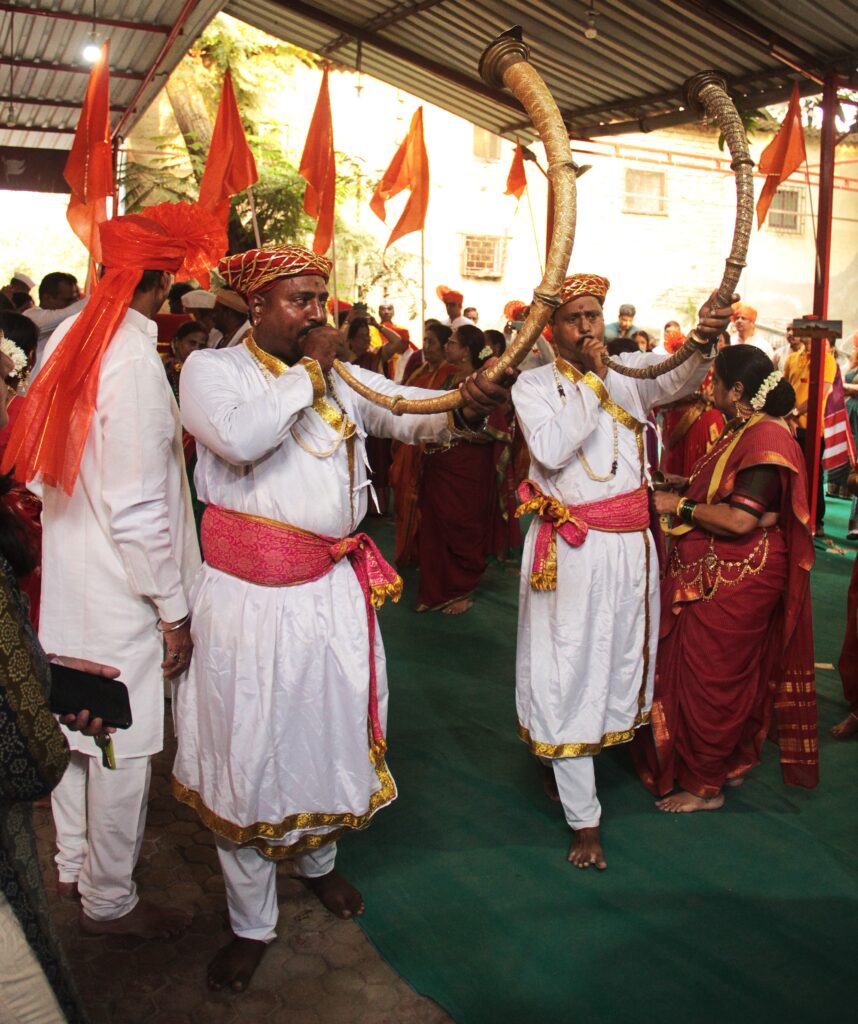
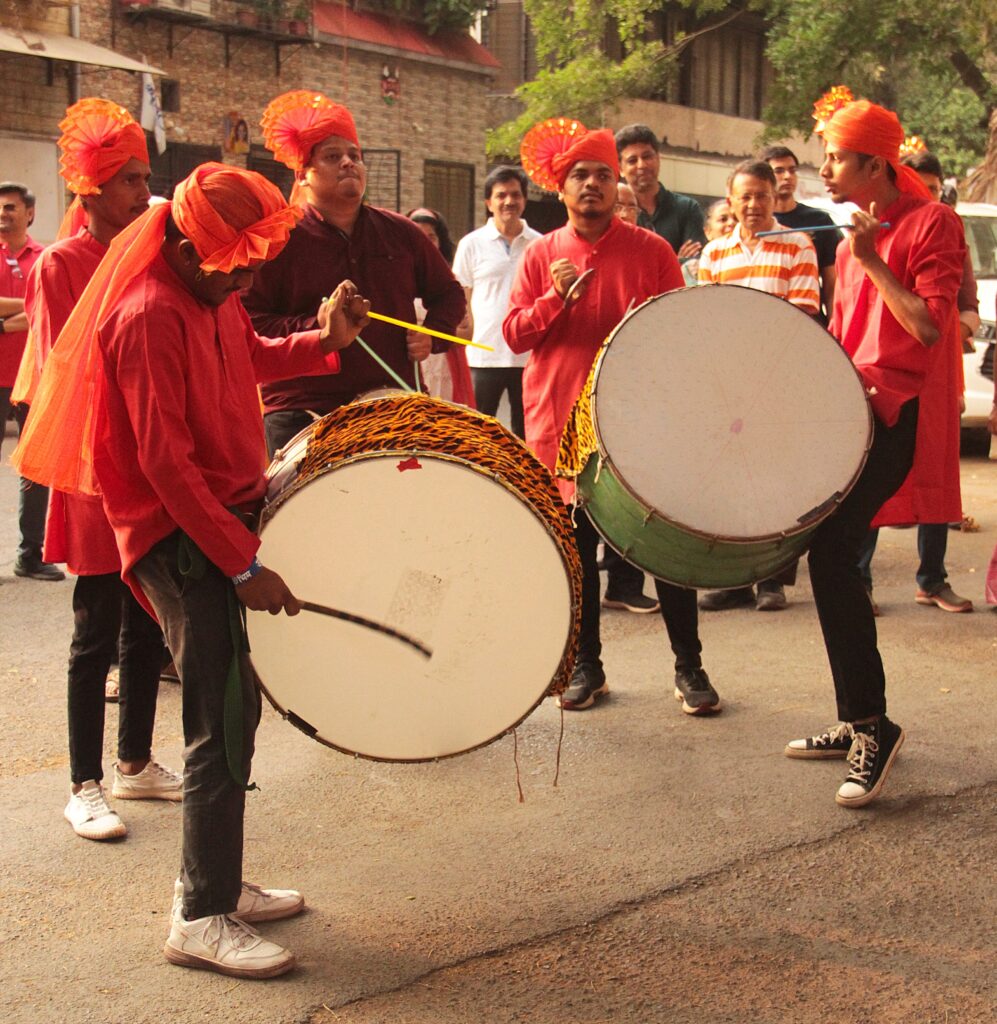
The Morning Begins
The people of Maharashtra celebrate their New Year in a completely different way. In the morning, they worship Vitthala (a form of Vishnu/Krishna).
In the afternoon, men, women, and children take part in a grand procession – many with turbans on their heads, joyfully playing the joydhak, singa (a curved wind instrument), and carrying bright flags in their hands. Women wear traditional saris tied at the back in the typical Maharashtrian style. (Gudi Padwa)
Sacred Offerings
Many women join the procession carrying sacred symbols – some with a tulasi plant on their heads, others holding idols of Radha and Krishna in their hands.
Here, no one is hired to play the instruments. Women, men, and boys themselves play the joydhak and singa with great enthusiasm.
Photostory: Brick Temples of Bengal
The Traditional Procession
The idols of Krishna and Radha were carried in a small palanquin. At the beginning of the procession, the idols were taken to the temple of Amba Devi, where a ritual worship was performed. After that, the procession continued with the playing of musical instruments and dancing. One child was dressed as Krishna and another as Radha. It was a unique and memorable experience.
This time, I am writing about how married women in Maharashtra dress up and dance on the day of Gudi Padwa, including their special nose rings and dhoti-style sarees. Let me share a few words about these. (Gudi Padwa)
Marathi or Peshwai Nath
Married women here wear a distinctive type of nose ring or nose ornament. This ornament, traditionally made of gold or silver, is an integral part of Maharashtrian culture. Often set with pearls or precious stones, it is called Motiyanchi Nath when decorated with pearls. These nose rings are worn during weddings and other special occasions. Typically, the Nath is worn through a pierced nose, though in some cases it is attached with a clip.
Photostory: Bonalu: A Festival of Devotion and Colour in Hyderabad
Navri Saree
This saree gets its name from its length – nine yards. It is traditionally worn during important festivals such as Ganesh Chaturthi and Gudi Padwa. The saree is draped in a dhoti-style manner, tied at the back just like a dhoti. Historically, during times of war or self-defence during ancient conflict, women wore their sarees this way for ease of movement – a tradition that continues to this day. During dance performances or in earlier times during war, a ribbon was tied at the waist to ensure the saree stayed in place. (Gudi Padwa)
Women here love to wear Paithani sarees. Paithani silk is known as the “Queen of Silks.” These exquisite silk sarees have been handwoven in the city of Paithan in Maharashtra for nearly two thousand years.
Lezim Dance
This is a unique traditional dance form of Maharashtra. Women perform this dance holding small sticks in their hands, each fitted with tiny tambourine-like jingles. These create rhythmic sounds as the dancers move in synchronised steps, adding to the festive energy. (Gudi Padwa)
Note
1. Joydhak: A traditional big drum like Indian musical instrument, played especially during festivals and processions; it produces a loud, ceremonial sound.
2. Singa: A curved wind instrument, typically made of metal or brass, blown to announce festive or religious events.
3. Navri Saree: A nine-yard-long saree traditionally worn in Maharashtra, draped in a dhoti-style that allows freedom of movement.
4. Motiyanchi Nath: A Maharashtrian nose ring adorned with pearls (moti), typically worn by married women during special occasions.
5. Paithani: An exquisite handwoven silk saree from Paithan, Maharashtra, known for its vibrant colours and intricate ‘zari’ work – regarded as the ‘Queen of Silks’.
Teacher-in-Charge & Associate Professor of Zoology (Retired), Burdwan Raj Collere, Barddhaman . Member of The Asiatic Society, Kolkata; Travel Writers Forum, Kolkata


